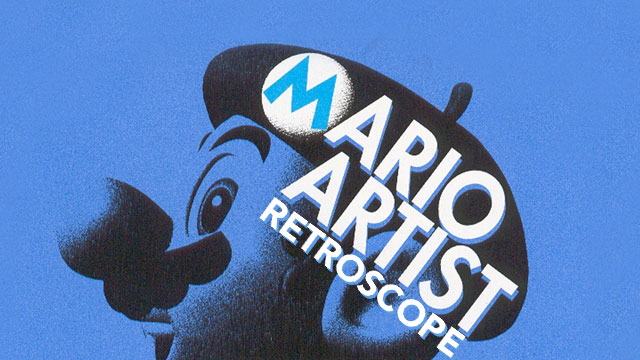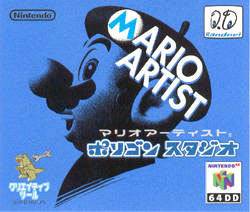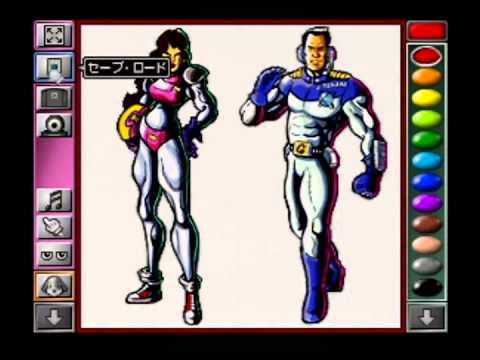
In a nutshell, Mario Artist was intended to be the spiritual successor to SNES’s Mario Paint, though on a much grander and elaborate scale. The suite of art software was only ever released in Japan, with some of the programs distributed as part of a bundle with the 64DD. The doomed add-on never managed to catch on even in Nintendo’s homeland, so Westerners sadly only ever glimpsed Mario Artist through sneak peaks in magazines of the era. This is an absolute shame, as Mario Artist was truly ahead of its time. Boasting incredibly clever ideas and gameplay elements, the software was a real showcase for the 64DD and what could have been.
What made Mario Artist unique, especially for a home video game console, was that the suite of software wasn’t comprised of “games” in the traditional sense. These were dedicated art and creation programs, designed to allow users to really stretch their imaginations to the limit. The titles used the Nintendo 64 Mouse, which, like the SNES Mouse, wasn’t all that different from the ones attached to a typical PC. The four art programs (there were initially going to be eight, but the remaining four were canceled) all boasted approachable, user-friendly interfaces that made engaging with the software easy to learn. As art software, all four programs offered competent creation tools that were fairly advanced considering they weren’t running on a computer.

Paint Studio was the program closest in concept to Mario Paint. What differentiated the two was the elaborate ways in which users could import images to modify and work from. The Nintendo 64 Transfer Pack, a peripheral most Westerners are familiar with from its use in Pokémon Stadium and Stadium 2, could be used with the Game Boy Camera to capture photos to use in Paint Studio. The game could also utilize the Nintendo 64 Capture Cartridge, which took content from things like video tapes. Of course, it wouldn’t have been much of a Mario Paint followup if there wasn’t a fly swatting minigame; as luck would have it, there was!
The three remaining pieces of Mario Artist are notable for their interconnectivity. Polygon Studio allowed for rudimentary 3D modeling, and creations from it could in turn be transferred to fellow program Talent Studio. Talent Studio itself was a very fascinating piece of software. Though still not quite a true game, it was the closest of the quartet that could qualify as one. Users would create avatars that could be dressed in a variety of outfits, and then record them doing a number of different performances. Interestingly, these avatars are often considered the precursors to what would eventually become Miis! In an early example of an attempt at online connectivity on home consoles, the final Mario Artist program, Communication Kit, allowed users to upload and share their creations from the other three programs.

Four fantastic pieces of software certainly, but for all its innovations, Mario Artist was arguably ahead of its time. Today’s smart devices and the ubiquity of the Internet make file sharing of all kinds a breeze, but the cumbersome nature of doing so on the 64DD platform was clearly always going to be a barrier for many users. Nintendo’s network capabilities were fueled by a company called Randnet in Japan, but it wasn’t a service available outside of the country. Though there were ways of getting online in the West at that point in time, the likelihood of getting any kind of substantial user base established was probably slim. There’s also no getting around how tedious it could be having to pull out the myriad of adapters and pieces of equipment to take advantage of some of Mario Artist‘s features. There’s definitely a chunk of Nintendo’s audience that would have loved piecing together all the components necessary, but again, it wouldn’t have been a group substantial enough to warrant bringing the software overseas.
Nintendo might not have ever brought Mario Artist beyond Japan’s shores, but the company eventually did take another stab at creativity software when Nintendo DS hit store shelves. Art Academy and Flipnote Studio have both carried the torch that first passed from Mario Paint to Mario Artist. Though slightly less ambitious than its past efforts, Nintendo continues to try and bring ways for players to use their consoles as creative outlets as much as game playing machines. Though it’s a shame Mario Artist and the 64DD both ultimately proved to be failures, their impact is felt to this day from everything to funny doodles on Miiverse, to intricate masterworks made in Art Academy: Sketchpad on Wii U.




 ShareThis
ShareThis






